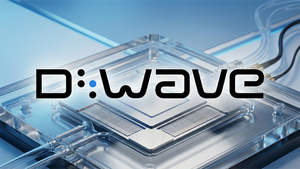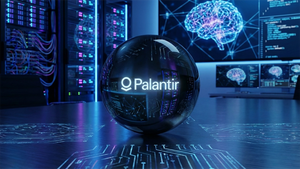I Paid for Michael Burry’s New $400 Substack So You Don’t Have To
News spreads quickly in investment circles, and perhaps no news spreads faster than whatever Michael Burry is doing these days.
Over the last month and a half, he returned to social media, spread a very bearish tale about hyperscalers and AI stocks, seemingly lost his bet against Nvidia, then won it. Instead of taking a traditional victory lap, he deregistered his hedge fund, named a successor, and launched a new newsletter.
This sequence of events is thrilling and confusing to say the least. But among the many questions about his next move, the most pertinent is: What do you get for spending $400 on Burry’s Substack subscription?
The name of Burry’s new Substack, which he announced in a post on X, is Cassandra Unchained, a reference to the mythological Ancient Greek oracle of the same name, who was cursed to utter true prophecies but never to be believed.
In the Substack’s About section, Burry says, “Running money professionally came with regulatory and compliance restrictions that effectively muzzled my ability to communicate. These constraints meant I could only share cryptic fragments publicly, if at all. Without comment or clarity from me, news media has wildly misinterpreted many of my mandatory SEC filings — even causing havoc in markets as well as angry debates that I never intended.
That is all over. Cassandra, as Warren Buffett called me during his testimony to Congress about the [Great Financial Crisis], is unchained. I am not retired. This has my full attention. There is still nothing I enjoy more than analyzing companies and markets each and every day. Not every day or even every week or month produces a great idea, but the process is fun. And I am excited now to share with you.”
This got my attention, and it’s part of my job here at Barchart to stay up to date on what’s going on in the markets.
So I let curiosity and my duty to our readers compel me to subscribe.
First Thoughts and Due Diligence
I must admit I hadn’t spent much time reading his early work. As part of my due diligence in shelling out $400, I reminded myself, “He was known for his writing even before The Big Short.”
So I went on another deep dive. I wanted to find as much of his writing as I could on what remains of the early internet. I found several posts and compilations from various sources, like this one.
The Big Short is one of my favorite movies, perhaps especially due to Christian Bale’s portrayal of Burry. But Bale’s role, and the recent coverage of Michael Burry’s investments, make him seem like a one-trick pony — that his infamous trade against subprime mortgages with credit default swaps was his only victory.
That’s not the case, actually.
His fund, Scion Asset Management, posted significant double-digit returns against the dot-com bubble collapse. And before Scion, he managed a (now shuttered) web portfolio for public viewing, called ValueStocks.net (VSN), which also performed very well against the Nasdaq Index and S&P 500 Index.
A Return to Form
In his new Substack, Cassandra Unchained, he references letters from nearly 30 years ago to explain his thought process and even links to some of his old works. The newsletter is a clear return to form. He is, above all, an excellent writer who loves his craft and cares deeply about the markets.
He explains his thought processes and why he’s writing again, primarily to analyze market facets that pique his interest or to share the investment theses of his current positions, saying “As I devote myself to Cassandra Unchained, I find myself on an old road not taken. I feel lucky, and I am grateful for the opportunity as I walk it again.”
It’s refreshing because you get to hear from this very successful investor who clearly has an old-school, contrarian approach, but still recognizes the value of certain modern-day companies.
For example, he was briefly bearish on Amazon in the early 2000s but quickly changed his mind.
My main takeaway from his most recent investment article, “The Cardinal Sign of a Bubble: Supply-Side Gluttony Part 1 of The Heretic’s Guide to AI’s Stars,” is that he’s comparing AI hyperscalers to the dot-com bubble companies. Naturally, a lot of this is copyrighted, so I want to avoid posting too much of his subscription content, but I’ll outline the key themes here.
He ties a big comparison to Cisco (CSCO) versus Nvidia (NVDA) as the pick-and-shovel play of that era. As he writes:
“But rather than being driven by profitless dot coms, the mighty NASDAQ charged through 1999 and into the new century powered by highly profitable large caps, among which were the so-called ‘Four Horsemen’ of the era—Microsoft, Intel, Dell, and Cisco…
The five public horsemen of today’s AI boom—Microsoft, Google, Meta, Amazon, and Oracle—are joined by several adolescent startups in promising nearly $3 trillion in spending on AI infrastructure over the next 3 years. Investors absolutely love it...
And once again, there is a Cisco at the center of it all, with the picks and shovels for all and the expansive vision to go with it. Its name is Nvidia.”
He also offers data and includes engaging, well-organized charts showing the growth of bubbles over the last 30 years, including shale oil, housing, cloud computing, and AI.
As a reader, it’s fascinating to observe his perspective. You don’t need to agree with it, but it offers a valuable historical lesson on how he benefited over time —from 1999, through the housing bubble, the pandemic, and its continued relevance today.
Is It Worth The Money?
I think so.
There’s a lot of noise on the internet, which Burry is also aware of and mentions, noting that in the early 2000s, paying for a subscription helped him with his investment decisions.
And today, with so much AI-generated content, nonstop news, and seemingly endless financial opinions, Burry’s voice at this premium price really cuts through to offer a clear perspective.
Plus, he knows perhaps better than any other stock market guru when to dial up the emotion to draw in his reader.
For me personally, one of my favorite lines in his new issue was a callback to how The Big Short ended. “On June 12, 1999, I married my oh so lovely wife of 26 years on a stunningly clear blue sky day in San Francisco. I had met her on match.com about 8 months earlier.” Not exactly market-related, but a great reminder of the human behind such an iconic trade.
I was skeptical at first about Cassandra Unchained, but I recommend taking the leap if you can. And if $400 upfront is too steep a price, you can opt in to a $39 monthly tier. That’s less than one-fourth of a single share of Nvidia.
On the date of publication, Justin Estes had a position in: NVDA . All information and data in this article is solely for informational purposes. For more information please view the Barchart Disclosure Policy here.
More news from Barchart
- I Paid for Michael Burry’s New $400 Substack So You Don’t Have To
- Warren Buffett Warns Not to Listen to Investing Gurus, ‘The Only Value of Stock Forecasters Is to Make Fortune Tellers Look Good’
- Stocks Set to Open Higher as Investors Await Key U.S. Economic Data
- GDP, Retail Sales and Other Can't Miss Items this Week
More News
View More




Recent Quotes
View MoreQuotes delayed at least 20 minutes.
By accessing this page, you agree to the Privacy Policy and Terms Of Service.